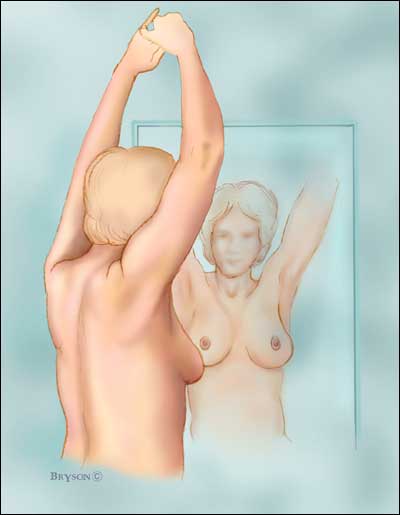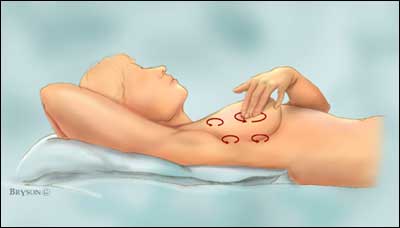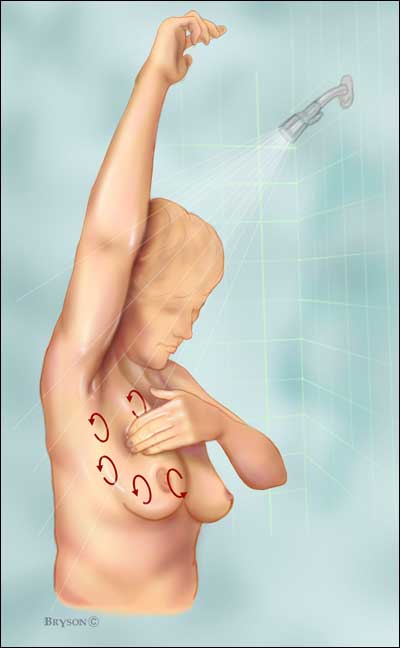
HOW TO DO YOUR MONTHLY BREAST EXAMS
This month, we’ll explore the benefits of BSEs, how to perform a breast self-exam, and the next steps if you discover changes in your breasts. Also, we’ll share tips to help you remember when your monthly self-exam is due.
DO YOU REALLY NEED TO DO BREAST SELF-EXAMS
While breast self-exams are NOT a substitute for annual exams and regular mammograms, they are part of a thorough, multimodal detection strategy. Robust screening should include self-exams, clinical exams, mammograms, ultrasounds, and genetic testing when applicable.
Young women and those who do not have a history of breast cancer in their families often do not begin regular mammograms until they are 40 years old. For those women, their only form of detection is yearly clinical exams and self-exams. Performing regular BSEs may be the best way for young women to detect changes in their breast health before it’s too late.
THE BENEFITS OF CLINICAL EXAMS
At your annual exam, your physician will perform a physical breast exam. A physician may detect a lump, often as small as a pea, that you may miss on your own. To the trained hand, benign and cancerous lumps feel slightly different. In most cases, a round, soft, movable lump is more likely to be benign. A hard, irregularly shaped, and immovable lump has the potential to be cancerous. If your doctor discovers something concerning, he or she will order imaging and possibly a biopsy.
Just as your self-exam is a critical part of breast cancer detection, so too is your annual breast exam with a physician.
HOW TO PERFORM A BREAST SELF-EXAM
Step 1: Visual Exam

- Do you see any puckering, swelling, dimpling, or changes in size?
- Do you see abnormal asymmetry between your breasts?
- Are there scales, rashes, or sores?
- Redness, warmth, and swelling are also warning signs of a possible lump.

Step 2: Physical Exam


Use varying pressure in each spot to feel the surface, middle, and deep tissue in your breast. It should take several minutes to examine both breasts thoroughly, so take your time.
HOW SHOULD A “NORMAL” BREAST FEEL?
Your breasts may even feel different during different times in your menstrual cycle. It’s not abnormal to find small bumps in your breast that shrink or disappear as your hormones fluctuate throughout the month.
Not all breasts are the same, which is why it’s so important to familiarize yourself with your body and perform breast self-exams often. If something feels different than it did in the past, or if there are changes in your breast shape, schedule an appointment with a doctor right away.
HOW CAN YOU REMEMBER YOUR MONTHLY BREAST SELF-EXAM?
Try to pick a specific date of the month or a time that lines up with your menstrual cycle. You can keep track of the date by setting a reminder on your cell phone, jotting it on the wall calendar in colored pen, or lining it up with another significant monthly date, like when you make your mortgage payment.
Creating a routine makes it easier for you to remember.
WHAT SHOULD YOU DO IF SOMETHING CHANGES?
At Breast Care Specialists of Carolina, we perform ultrasound guided biopsies that are minimally invasive and low risk. Using local anesthesia, Dr. Thomas uses an ultrasound to locate the abnormal area for a targeted biopsy. In most cases, the incision is so small that it doesn’t even require a stitch. There is no downtime after the biopsy, patients can shower after 24-hours, and they heal without a scar. With an ultrasound guided biopsy, patients gain peace of mind without undergoing major surgery.
REMEMBER, BREAST LUMPS AREN’T ALWAYS CANCER
If you’re worried about something you’ve discovered in your breast, get in touch with Breast Care Specialists of Carolina today.
Phone: 704-769-3800 | Fax: 949.404.8311
